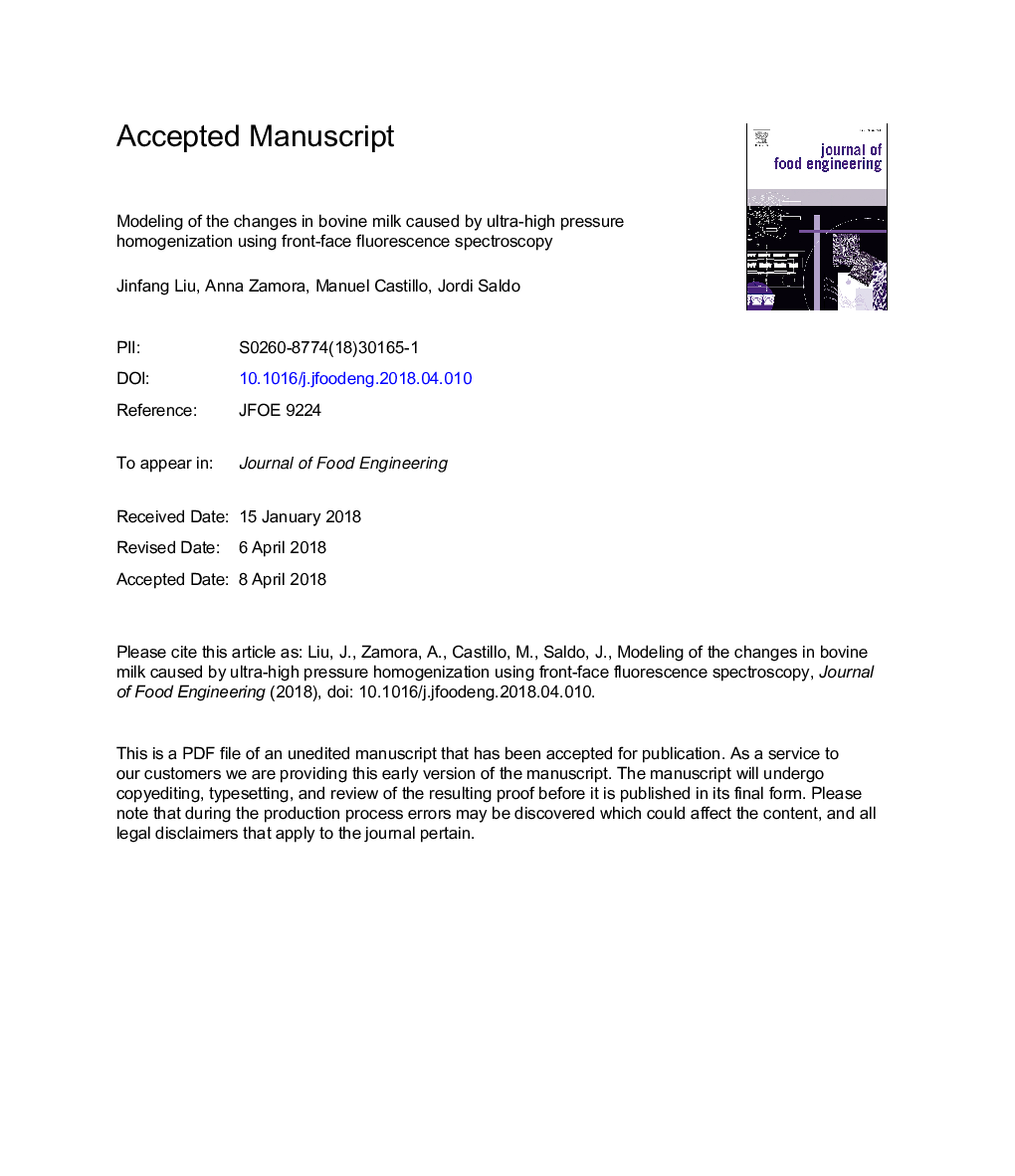| Article ID | Journal | Published Year | Pages | File Type |
|---|---|---|---|---|
| 6664502 | Journal of Food Engineering | 2018 | 46 Pages |
Abstract
Ultra-high pressure homogenization (UHPH) has been considered as an effective method to modify/enhance liquid-food properties in many studies. This research provides an alternative approach to monitor, evaluate and control quality changes induced by UHPH processing of milk using front-face fluorescence spectroscopy for potential inline usage. The fluorescence intensity spectra provided structural, functional and nutritional information of milk compounds diversification. Homogenization pressure and inlet temperature were distributed on a central composite design which covered the range of commonly used UHPH treatment conditions for improving milk technological and sensory characteristics as well as microbiological safety. The indicators showed good fit to the response surfaces as functions of pressure and inlet temperature. Tryptophan and dityrosine fluorescence provided information on milk protein changes, such as denaturation and aggregation, and particle size changes also confirmed protein denaturation and aggregation information from the fluorescence results. Generation of Maillard compounds indicated the thermal effects between reducing sugar and amino acids on milk. The retinol concentration, as a nutrient, could be well predicted by principal components summarized from milk sample spectra, without sample preparation.
Keywords
Related Topics
Physical Sciences and Engineering
Chemical Engineering
Chemical Engineering (General)
Authors
Jinfang Liu, Anna Zamora, Manuel Castillo, Jordi Saldo,
